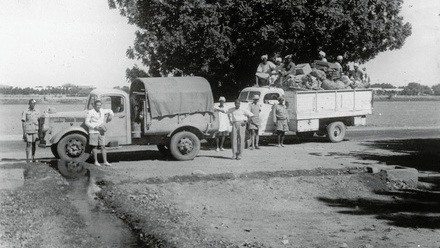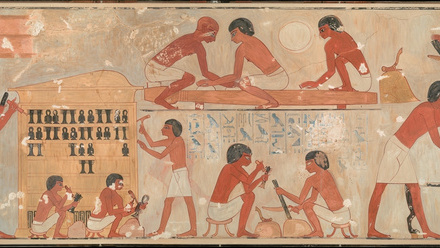Amarna: Capital of the heretic pharaoh
The Society’s first expedition to Tell el-Amarna, in Middle Egypt, was mounted between 1901 and 1907 when Norman de Garis Davies (1865-1941) recorded the nobles’ tombs and the boundary stelae of Akhenaten for the Archaeological Survey. Excavation proper began in 1921 and continued until 1936, under a series of field directors, revealing the plan of the temples and houses of this unique ancient city.
The first field director was Charles Leonard Woolley (1880-1960), later to become renowned as the excavator of Ur. He was succeeded by Francis Giesler Newton (1878-1924) and Henri Frankfort (1897-1954), before direction of the excavation passed in 1931 into the hands of John Devitt Stringfellow Pendlebury (1904-1941), curator of the site of Knossos in Crete.
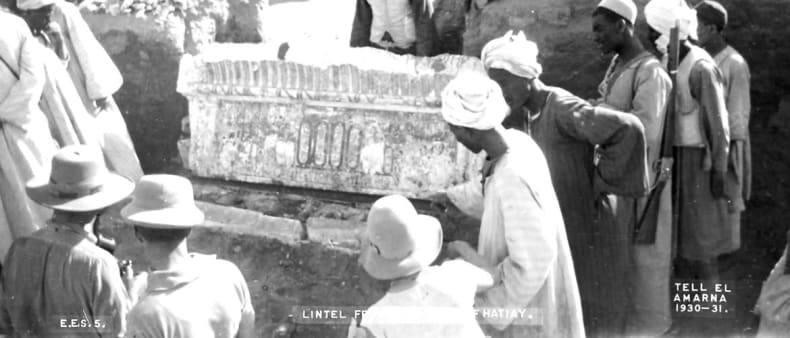
The discovery of the decorated lintel of Hatiay during the 1930-31 dig season, see film footage below.
In addition to continuing the excavation of the town, the Society’s team also worked in the Royal Tomb, prepared for Akhenaten and his family in a nearby desert wadi. The excavation of the town was published in three volumes but the Royal Tomb records remained in the Society’s archives until, supplemented by his own research, they were prepared for publication by Geoffrey Martin in the 1970s and 80s.
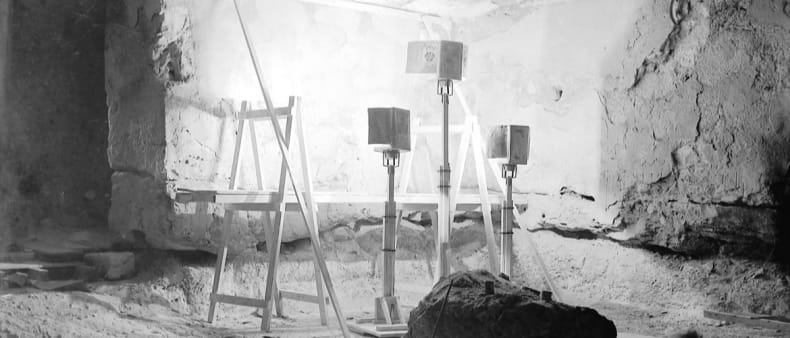
The lighting system set up in the royal tomb to record the decoration preserved
In 1977 the Society returned to Amarna, under the directorship of Barry Kemp, to undertake a detailed survey of the site and prepare accurate plans of the area. These were published by the Society in 1993. From this survey work, the EES team moved on to excavate the Workman’s Village and areas of the central city and Kom el-Nana, which was under threat from cultivation. In 2008, the Amarna Project took over direction of work at the site and has become a focus for research into aspects of ancient Egyptian life, such as brewing, baking and glass-making. Since 2014 the Egypt Exploration Society has once again supported projects at Amarna as part of its wider grants process.
The Society's history of excavation at Amarna is one of the best represented in our archive collections, attracting researchers from all across the world. The thousands of objects discovered during the 15 years of excavations between 1921 and 1936 were each recorded on individual record cards, all of which have now been digitised and made available via Flickr here. The 1930-32 seasons were written about by Mary Alford Chubb (1903-2003, assistant secretary of the Society, and excavator at Amarna on these seasons) in her memoir, Nefertiti Lived Here. In this she discusses life on site, the dig houses, recording of objects, the dig team and the discoveries made - including the 'crock of gold'.
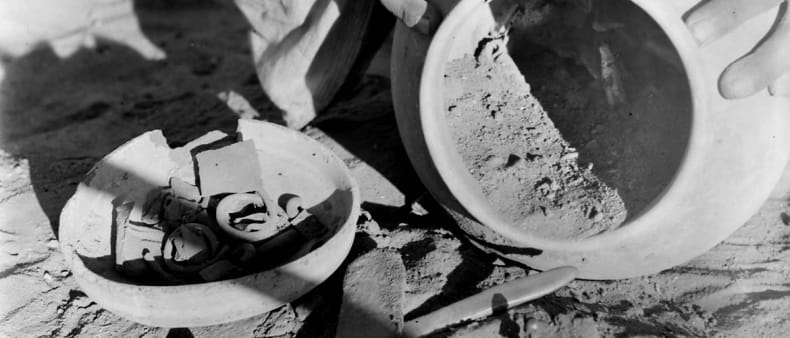
The crock of gold when just discovered in 1931
Further Reading
Chubb, M. A. 1954. Nefertiti Lived Here. London: Geoffrey Bles Limited.
Frankfort, H. and J. D. S. Pendlebury. 1933. The city of Akhenaten. Part II: the north suburb and the desert altars. The excavations at Tell el Amarna during the seasons 1926-1932. London: Egypt Exploration Society.
Peet, T. E. and C. L. Woolley. 1923. The city of Akhenaten. Part I: excavations of 1921 and 1922 at el-'Amarneh. London: Egypt Exploration Society.
Pendlebury, J. D. S. 1951. The city of Akhenaten. Part III: the central city and the official quarters. The excavations at Tell el-Amarna during the season 1926-1927 and 1931-1936, 2 vols. London: Egypt Exploration Society.

